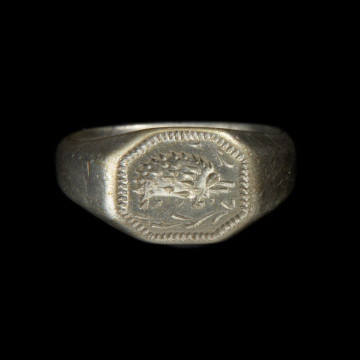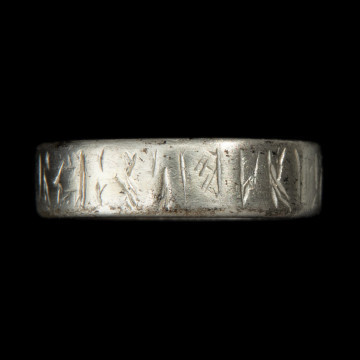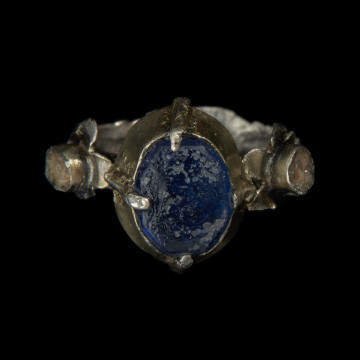
Signet ring with hedgehog
przełom XIV i XV wieku
National Museum in Szczecin
Part of the collection: Jewels and costumes of Pomeranian dukes
In the 16th and early 17th centuries, gold chains were an essential part of the attire of rulers, aristocracy, nobility, patricians and wealthy townsmen. They could be worn alone, linked into several or even more than a dozen cords, or together with jewels hung on them. The long chain found in the sarcophagus of Duke Francis I of Pomerania consists of tiny, oval links of circular cross-section, alternately smooth and with transverse grooves. Probably a tiny diamond pendant with the letters IHS, also belonging to Francis' tomb furnishings, was suspended on it. In the posthumous portrait of the sovereign from 1621, possessed by the cathedral in Merseburg, the pendant was painted with a bouquet of herbs at the height of the Duke's waist, which agrees with the length of the presented chain. In the said painting, the chain is unfortunately not visible.Chains depicted on Pomeranian dukes' portraits usually consist of smooth oval or round links and are usually connected in several strings. However, links of Renaissance ornaments of this type could have various shapes. For example, the chain excavated in 1862 from the sarcophagus of Duchess Erdmutha of Pomerania, on which a crucifix-shaped jewel was suspended, was made of rectangular links, additionally decorated with balls.
Monika Frankowska-Makała
Author / creator
Dimensions
cały obiekt: height: 109 cm, width: 0,4 cm
Object type
chain, jewellery
Creation time / dating
Creation / finding place
Identification number
Location / status

przełom XIV i XV wieku
National Museum in Szczecin

przełom XIV i XV wieku
National Museum in Szczecin

National Museum in Szczecin
DISCOVER this TOPIC
Castle Museum in Łańcut
DISCOVER this PATH
Educational path